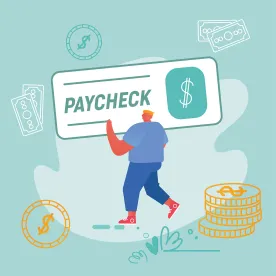On June 16, 2020, the SBA released a revised PPP loan forgiveness application form and instructions, along with a brand new “EZ” version and instructions. The forms implement provisions of the recent PPP Flexibility Act of 2020 (signed into law on June 5, 2020) and address criticism that the original forgiveness application was too cumbersome and document intensive. For the reader’s convenience, I prepared a set of highlighted and annotated versions of the forms and instructions, which makes it easy to follow what’s new, what changed and what stayed the same.
The new EZ form applies to any size loan in one of three categories: (1) self-employed borrowers with no employees, (2) borrowers who did not reduce salaries or wages of employees by more than 25% and did not reduce the number or average paid hours of employees (with some exceptions), and (3) borrowers who did not reduce salaries or wages of employees by more than 25% and experienced reductions in business activity as a result of COVID-19 related health directives. There is a useful checklist for borrowers to determine if they can use it, and thereby take advantage of its fewer calculations and lower level of documentation.
The EZ form does not require calculations or adjustments for reductions in FTEs or salary or hourly wage reductions, rather it substitutes borrower certifications for that purpose. There is also a new certification about the inability to operate at the same level of business activity due to COVID-19 compliance requirements. It addresses the old 8-week (56-day) and the new 24-week (168-day) covered period, caps owner compensation at $20,853 and cash compensation at $46,154, both for 24-weeks.
The revised “full” form is a variation on the original form introduced last month. The majority of the changes are designed to conform it to the language to the Flexibility Act and a series of new and revised interim final rules. It addresses the same 8-week and 24-week option and the same owner and cash compensation cap. It lowers the payroll cost threshold to 60% (down from 75%) of the total forgiveness amount and clarifies that non-payroll costs may be paid or incurred during the covered period (or alternate covered period) and may not exceed 40% (up from 25%).
Aside from the new 24-week covered period, many of the most significant changes in the revised form relate to the Salary/Hourly Wage Reduction Safe Harbor and the FTE Reduction Safe Harbor. Borrowers now have the flexibility to restore salary and hourly wage reductions (falling below a 25% reduction) as of the earlier of December 31, 2020 and the date the forgiveness application is submitted. This is a new and favorable clarification to what was previously a hard date (June 30, 2020), and should provide borrowers with more options to maximize loan forgiveness as they determine the best time to measure average annual salary or hourly wages between now and calendar year-end.
The FTE Reduction Safe Harbor has been expanded in several ways. Borrowers were already protected against reductions due to firings for cause, voluntary resignations and voluntarily requested and received reductions in hours. New protections now exist for good-faith, written offers: (1) to rehire individuals employed on February 5, 2020 if Borrowers are unable to rehire similarly qualified employees for unfilled positions on or before December 31, 2020, and (2) to restore any reduction in hours, at the same salary or wages, during the covered or alternate covered period and the employee rejected the offer.
Similarly, there is the new exemption from the reduction in loan forgiveness for COVID-19 related impacts on business activity. Borrowers must be able to document, in good-faith, that they were unable to operate (between February 15, 2020, and the end of the covered period) at the same level of business activity as before February 15, 2020, due to compliance with requirements established or guidance issued (between March 1, 2020 and December 31, 2020), by the HHS Secretary, the CDC Director or OSHA, related to the maintenance of standards for sanitation, social distancing, or any other worker or customer safety requirement related to COVID-19.
At first blush, this exemption (similar to the EZ form version) seems very generous, since it is hard to imagine a borrower who has not been impacted by requirements or guidance of this nature. The key is the interpretation of the presently undefined concept “unable to operate at the same level of business activity” and also whether state, county or municipal requirements and guidance is sufficient on its own or must be tied to HHS, CDC or OSHA directives. As we await additional SBA guidance, it appears this could be a very popular exemption leading to increased forgiveness, which is welcome news for borrowers.
Treasury forms and instruction Links:




 />i
/>i

